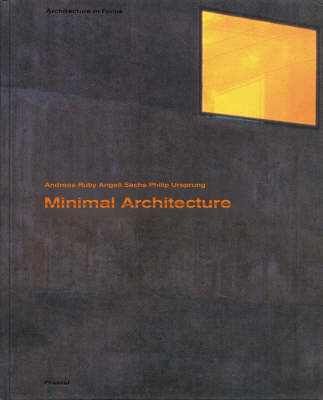Architecture in Focus S.
2 total works
In this exciting, large-format volume, hundreds of photographs and illustrations document a major shift from the building as structure to the building as image. This exploration of the use and significance of two-dimensional images in contemporary architecture looks at the works of major designers, including Zaha Hadid, Herzog & de Meuron, Rem Koolhaas, MVRDV, and Sauerbruch & Hutton, among others. It shows how certain architectural principles such as color and ornament - which nearly disappeared in modern twentieth century architecture - are making a strong comeback. Drawing connections to the rise of globalization and current media trends, this examination uses an abundance of thematically arranged photographs to illustrate what is unmistakably a major contemporary developement in architecture.
This trenchant re-examination of minimalism in architecture helps deepen our understanding of a style as diverse as the artists who practice it. What is minimalism? Or, more specifically, what isn't? In this aesthetic voyage three experts in the field of architecture and art history trace the development of minimalism as a style and offer perspectives on the directions the movement is taking as it morphs toward the future. In double-page spreads filled with colour photographs of the most innovative minimalist projects, this book illustrates three principal movements: the traditional, as practiced by Herzog & de Meuron in early works, Adolf Krischanitz and Tadao Ando; the ambiguous, in which architects not commonly associated with minimalism, such as OMA or Zaha Hadid, use it for specific projects; and the subversive, which appropriates minimalist concepts across a variety of new fields as exemplified in the architecture of Shigeru Ban or Lacaton & Vassal. Coupled with an historical analysis of the relationship between minimalism in architecture to its appearance in art, the book examines minimalism as a paradigm for modern architecture.

